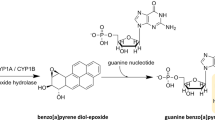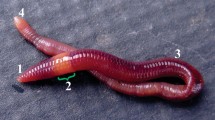Abstract
Fish at early life stages are sensitive to temperature change because of their narrower temperature tolerance ranges. Initiated by damage detection, DNA mismatch repair (MMR) and nucleotide excision repair (NER) maintain genome integrity respectively by eliminating mismatched nucleotides and helix-distorting DNA lesions. As discharge of heated effluent from power plants may elevate water temperatures to only 2 to 6 °C higher than ambient, this study explored if temperatures within this range affected MMR and NER-linked damage detection activities in fish embryos using zebrafish (Danio rerio) embryo as a model organism. Exposure of early embryos at 10 h post fertilization (hpf) to a warmer temperature at + 4.5 °C for 30 min enhanced damage recognition activities targeting UV-induced cyclobutane pyrimidine dimers (CPDs) and (6–4) photoproducts (6-4PPs) that distorted helical structures. Conversely, photolesions sensing activities were inhibited in 24 hpf mid-early embryos under the same stress conditions. A much higher temperature at + 8.5 °C imposed similar effects on UV damage detection. A mild heat stress at + 2.5 °C for 30 min, however, repressed both CPD and 6-4PP binding activities in 10 and 24 hpf embryos. Inhibition of damage recognition under mild heat stress impeded the overall NER capacity evidenced by a transcription-based repair assay. Warmer water temperatures at + 2.5 and + 4.5 °C also inhibited G-T mismatch binding activities in 10 and 24 hpf embryos, but G-T recognition was more sensitive to + 4.5 °C stress. Inhibition of G-T binding partially correlated with a downregulation of Sp1 transcription factor activity. Our results showed the potential of water temperature elevation within 2 to 4.5 °C to disturb DNA damage repair in fish at embryonic stages.







Similar content being viewed by others
Data availability
The data that support the findings reported in this article are available from the corresponding author upon reasonable request.
Code availability
Not applicable.
References
Alizadeh Sabet HR, Kalbassi MR, Pourkazemi M, Sadeghizadeh M (2019) Evaluation of incubation temperature on DNA damages of the Caspian trout (Salmon trutta caspius Kessler, 1877) single cells through developmental stages by Comet assay. Iran J Fish Sci 18:48–59
Armstrong TN, Reimschuessel R, Bradley BP (2002) DNA damage, histological changes and DNA repair in larval Japanese medaka (Oryzias latipes) exposed to ultraviolet-B radiation. Aquat Toxicol 58:1–14
Beecher M, Kumar N, Jang S, Rapic-Otrin V, Van Houten B (2020) Expanding molecular roles of UV-DDB: Shining light on genome stability and cancer. DNA Repair 94:102860
Blair SD, Glover CN (2019) Acute exposure of larval rainbow trout (Oncorhynchus mykiss) to elevated temperature limits hsp 70b expression and influences future tolerance. Hydrobioloqia 836:155–167
Chang Y, Lee W-Y, Lin Y-J, Hsu T (2017) Mercury (II) impairs nucleotide excision repair (NER) in zebrafish (Danio rerio) embryos by targeting primarily at the stage of DNA incision. Aquat Toxicol 192:97–104
Chatteriee N, Walker GC (2017) Mechanisms of DNA damage, repair and mutagenesis. Environ Mol Mutagen 58:235–263
Chien L-C, Wu Y-H, Ho T-N, Huang Y-Y, Hsu T (2020) Heat stress modulates nucleotide excision repair capacity in zebrafish (Danio rerio) early and mid-early embryos via distinct mechanisms. Chemosphere 238:124653
Costa RMA, Chigancas V, Galhardo RDS, Carvalho M, Menck CFM (2003) The eukaryotic nucleotide excision repair pathway. Biochimie 85:1083–1099
David WM, Mitchell DL, Walter RB (2004) DNA repair in hybrid fish of the genus Xiphophorus. Comp Physiol Biochem Part C 138:301–309
Duan M, Speer RM, Ulibarri J, Liu KJ, Mao P (2021) Transcription-coupled nucleotide excision repair: new insights revealed by genomic approached. DNA Repair 103:103126
Gazzoli L, Kolodner RD (2003) Regulation of the human MSH6 gene by the Sp1 transcription factor and alteration of promotor activity and expression by polymorphisms. Mol Cellu Biol 23:7992–8007
Gillet LC, Schärer OD (2006) Molecular mechanisms of mammalian global genome nucleotide excision repair. Chem Rev 106:253–276
Hanawalt PC, Spivak G (2008) Transcription-coupled DNA repair: two decades of progress and surprises. Nat Rev Mol Cell Biol 9:958–970
Ho T-N, Paul GV, Chen Y-H, Hsu T (2019) Heat stress upregulates G-T mismatch binding activities in (Danio rerio) embryos preexposed and nonexposed to a sublethal level of cadmium (Cd). Chemosphere 218:179–188
Hsieh P, Zhang Y (2017) The Devils in the details for DNA mismatch repair. Proc Natl Acad Sci USA 114:3552–3554
Hsu T, Cheng CS, Shih CY, Yeh FL (2002) Detection and partial characterization of a UV-damaged-DNA binding activity highly expressed in zebrafish (Danio rerio) embryos. Fish Physiol Biochem 25:41–51
Hsu T, Tsai H-T, Huang K-M, Luan M-C, Hsieh C-R (2010) Sublethal levels of cadmium down-regulate the gene expression of DNA mismatch recognition protein MutS homolog 6 (MSH6) in zebrafish embryos. Chemosphere 81:748–754
Huang S, Liu ZQ, Ma ZQ, Zhang JY, Huang LQ (2018) Functional identification of the proximal promotor region of human pyridoxine 5’-phosphate oxidase gene. Gene Rep 12:66–73
Hwang D-F, Chen L-T, Shao K-T, Jeng S-S (1998) Levels of heavy metals and vitamin C in deformed thornfish found in thermal waters and effects of vitamin C on deformation of thornfish. Fish Sci 64:291–294
Iaccarino I, Marra G, Palombo F, Jiricny J (1998) hMSH2 and hMH6 play distinct roles in mismatch binding and contributes differently to the ATPase activity of hMutSα. EMBO J 17:2677–2686
Kenny MK, Mendez F, Sandigursky M, Kureekattil RP, Goldman JD, Franklin WA, Bases R (2001) Heat shock protein 70 binds to human apurinic/apyrimidinic endonuclease and stimulate endonuclease activities at abasic sites. J Biol Chem 276:9532–9536
Kienzler A, Bony S, Devaux A (2013) DNA repair activity in fish and interest in ecotoxicology: a review. Aquat Toxicol 134–135:47–56
Kim JK, Patel D, Choi BS (1995) Contrasting structural impacts induced by cis-syn cyclobutane dimer and (6–4) adduct in DNA duplex decamers: implication in mutagenesis and repair activity. Photochem Photobiol 62:44–50
Kimmel CB, Ballard WW, Kimmel SR, Ullmann B, Schilling TF (1995) Stages of embryonic development of the zebrafish. Dev Dyn 203:253–310
Kunkel TA, Erie DA (2015) Eukaryotic mismatch repair in relation to DNA replication. Annu Rev Genet 49:291–313
Laffoley D, Baxter JM (eds) (2016) Full report, Gland, Switzerland, IUCN
Li G-M (2008) Mechanisms and functions of DNA mismatch repair. Cell Res 18:85–98
Ling L-B, Chang Y, Liu C-W, Lai P-L, Hsu T (2017) Oxidative stress intensity-related effects of cadmium (Cd) and paraquat (PQ) on UV-damaged-DNA binding and excision repair activities in zebrafish (Danio rerio) embryos. Chemosphere 167:10–18
Matthias M, Hartwig PS, Stefan R, Klaus P, Thomas L, Bernd B (2000) Multistep mechanism of substrate binding determines chaperone activity of Hsp 70. Nature Structur Biol 7:586–593
Mayer MP, Bukau B (2005) Hsp 70 chaperones: cellular functions and molecular mechanism. Cell Mol Life Sci 62:670–684
Morimoto R (1993) Cells in stress: transcriptional activation of heat shock genes. Science 259:1409–1410
Mu H, Geacintow NE, Bryode S, Yeo J-E, Schärer OD (2018) Molecular basis for damage recognition and verification by XPC-RAD23B and TFIIH in nucleotide excision repair. DNA Repair 71:33–42
Mulhollem JJ, Colombo RE, Wahl DH (2016) Effects of heated effluent on Midwestern US lakes: implications for future climate change. Aquat Sci 78:743–753
Ørnsrud R, Gil L, Waagbø R (2004) Teratogenicity of elevated egg incubation temperature and egg vitamin A status in Atlantic salmon Salmon salar L. J Fish Dis 27:213–223
Pei DS, Strauss PR (2013) Zebrafish as a model system to study DNA damage and repair. Mutat Res 743–744:151–159
Rastogi RP, Richa KA, Kumar A, Tyagi MB, Sinha RP (2010) Molecular mechanisms of ultraviolet radiation-induced DNA damage and repair. J Nucl Acids 2010:592980
Roychowdhury P, Aftabuddin M, Pati MK (2021) Thermal stress-induced oxidative damages in the liver and associated death in fish. Labeo Rohita Fish Physiol Biochem 47:21–32
Scrima A, Konícková R, Czyzewski BK, Kawasaki Y, Jeffery PD, Groisman R, Nakatani Y, Iwai S, Pavietich NP, Thomā NH (2008) Structural basis of UV- damage recognition by the DDB1-DDB2 complex. Cell 135:1213–1223
Sottile ML, Nadin SB (2018) Heat shock proteins and DNA repair mechanisms: an updated overview. Cell Stress Chaperones 23:303–315
Sugasawa K (2016) Molecular mechanisms of DNA damage recognition for mammalian nucleotide excision repair. DNA Repair 44:110–117
Swift ML, Azizkhan-Clifford J (2022) DNA damage-induced sumoylation of Sp1induced its interaction with RNF4 and degradation in S phase to remove 53BP1 from DSBs and permit HR. DNA Repair 111:103289
Swift ML, Beishline K, Flashner S, Azizkhan-Clifford J (2021) DSB repair pathway choice is regulated by recruitment of 53BP1 through cell cycle-dependent regulation of Sp1. Cell Rep 34:108840
Takle H, Baeverfjord G, Andersen Ø (2004) Identification of stress sensitive genes in hyperthermic Atlantic salmon (Salmon salar) embryos by RAP-PCR Fish Physiol. Biochem 30:275–281
Watkin RD, Nawrot T, Potts RJ, Hart BA (2003) Mechanisms regulating the cadmium-mediated suppression of Sp1 transcription factor activity in alveolar epithelial cells. Toxicology 184:157–178
Wither A, Bamber R, Colclough S, Dyer K, Elliott M, Holmes P, Jenner H, Taylor C, Tuenpenny A (2012) Setting new thermal standards for transitional and coastal (TraC) waters. Mar Pollu Bull 64:1564–1579
Yang J, Liu X, Niu P, Zou Y, Duan Y (2009) Correlation and co-localizations of Hsp 70 with XPA, XPG in human bronchial epithelial cells exposed to benzo(a)pyrene. Toxicology 265:10–14
Yeh F-L, Yan H-L, Wang S-Y, Jung T-Y, Hsu T (2003) Molecular cloning of zebrafish (Danio rerio) MutS homolog 6 (MSH6) and noncoordinate expression of MSH6 gene activity and G-T mismatch binding proteins in zebrafish larvae. J Exp Zool A 297:118–129
Cheung WL, Pauly D (2016) Impacts and effects of ocean warming on marine fishes: In: Laffoley, D., & Baxter, J.M. (editors). Explaining ocean warming: causes, scale, effects, and consequences. Full report, Gland, Switzerland; IUCN, 456 pp.
Funding
This work was financially supported by the Ministry of Science and Technology of Taiwan, the Republic of China, under grant number NSC 102–2313-B-019–017.
Author information
Authors and Affiliations
Contributions
GVP maintained zebrafish husbandry, collected zebrafish embryos, prepared zebrafish extracts, and performed electrophoretic mobility shift assay. ACS carried out heat exposure and performed DNA repair assay. TH determined the objective of study, designed all experiments, interpreted the data, and submitted the manuscript.
Corresponding author
Ethics declarations
Ethical approval
Zebrafish embryos were stressed with different levels of warmer water temperatures according to the ethical guidelines of the Animal Care and Use Committee (IACUC) of National Taiwan Ocean University. The consent to participate and publish was approved by IACUC with an approval No. 101043.
Competing interests
The authors declare no competing interests.
Additional information
Publisher's note
Springer Nature remains neutral with regard to jurisdictional claims in published maps and institutional affiliations.
Supplementary Information
Below is the link to the electronic supplementary material.
Rights and permissions
Springer Nature or its licensor (e.g. a society or other partner) holds exclusive rights to this article under a publishing agreement with the author(s) or other rightsholder(s); author self-archiving of the accepted manuscript version of this article is solely governed by the terms of such publishing agreement and applicable law.
About this article
Cite this article
Paul, G.V., Sihite, A.C. & Hsu, T. Susceptibility of DNA damage recognition activities linked to nucleotide excision and mismatch repair in zebrafish (Danio rerio) early and mid-early embryos to 2.5 to 4.5 °C heat stress. Fish Physiol Biochem 49, 515–527 (2023). https://doi.org/10.1007/s10695-023-01198-1
Received:
Accepted:
Published:
Issue Date:
DOI: https://doi.org/10.1007/s10695-023-01198-1




